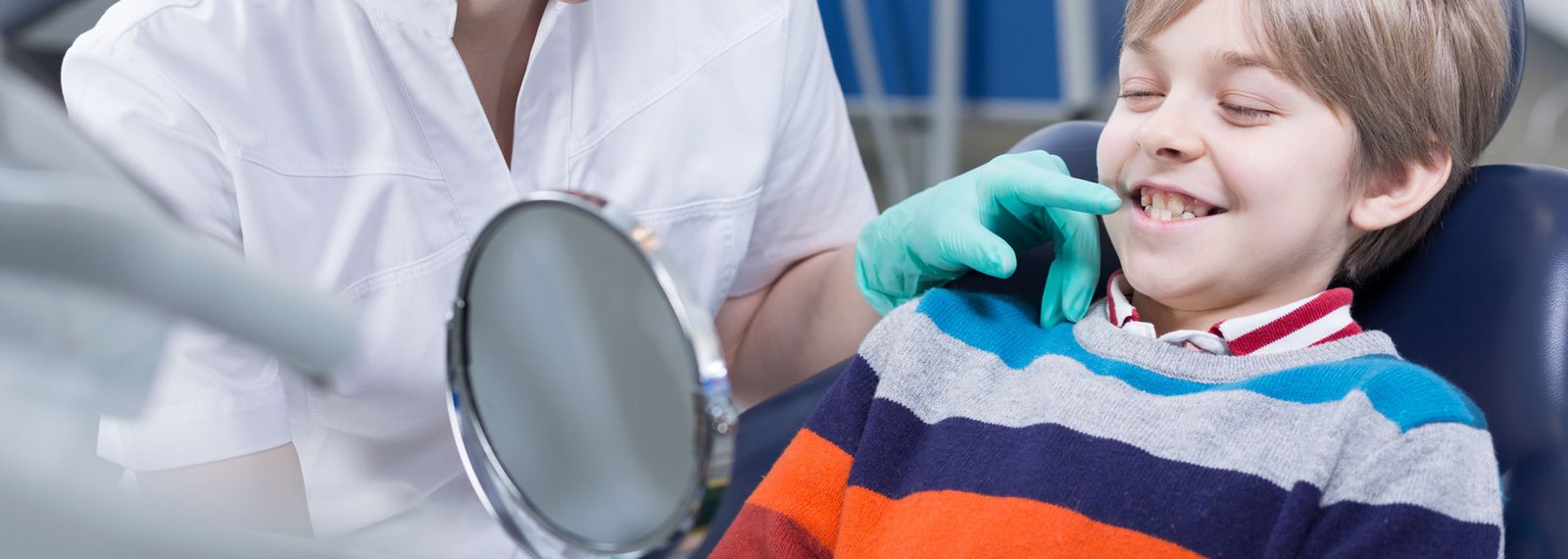Children’s Dentistry Services
in Salt Lake City and Taylorsville, UT

Our Pediatric Dental Services in Herriman
Whether your child is ready for their 6 month dental checkup or a more extensive oral procedure, our team has the training and experience to provide a safe and comfortable experience for your child. Also, did you know that each of our dentists is a board certified specialists for the American Academy of Pediatric Dentistry (AAPD)? This means that on top of graduating from dental school, they spent several additional years learning safe practices specific to treating young patients. In addition to the extra schooling, they also attend several continuing professional education courses each year to learn the newest and most effective treatment methods.
Below is a list of some of the procedures we commonly perform in our children’s dentistry office in Salt Lake City. If you have any questions about any of these procedures, please feel free to contact us!
Services
Composite Fillings
White composite fillings are most often the best option when it comes to filling a cavity and restoring a tooth. These fillings are made from a mixture of composite resins (mixtures of plastics and silica) and are designed to match the original color of your child’s tooth. Unlike highly noticeable silver (amalgam) fillings, white composite fillings are practically undetectable and will help your child maintain a beautiful smile!
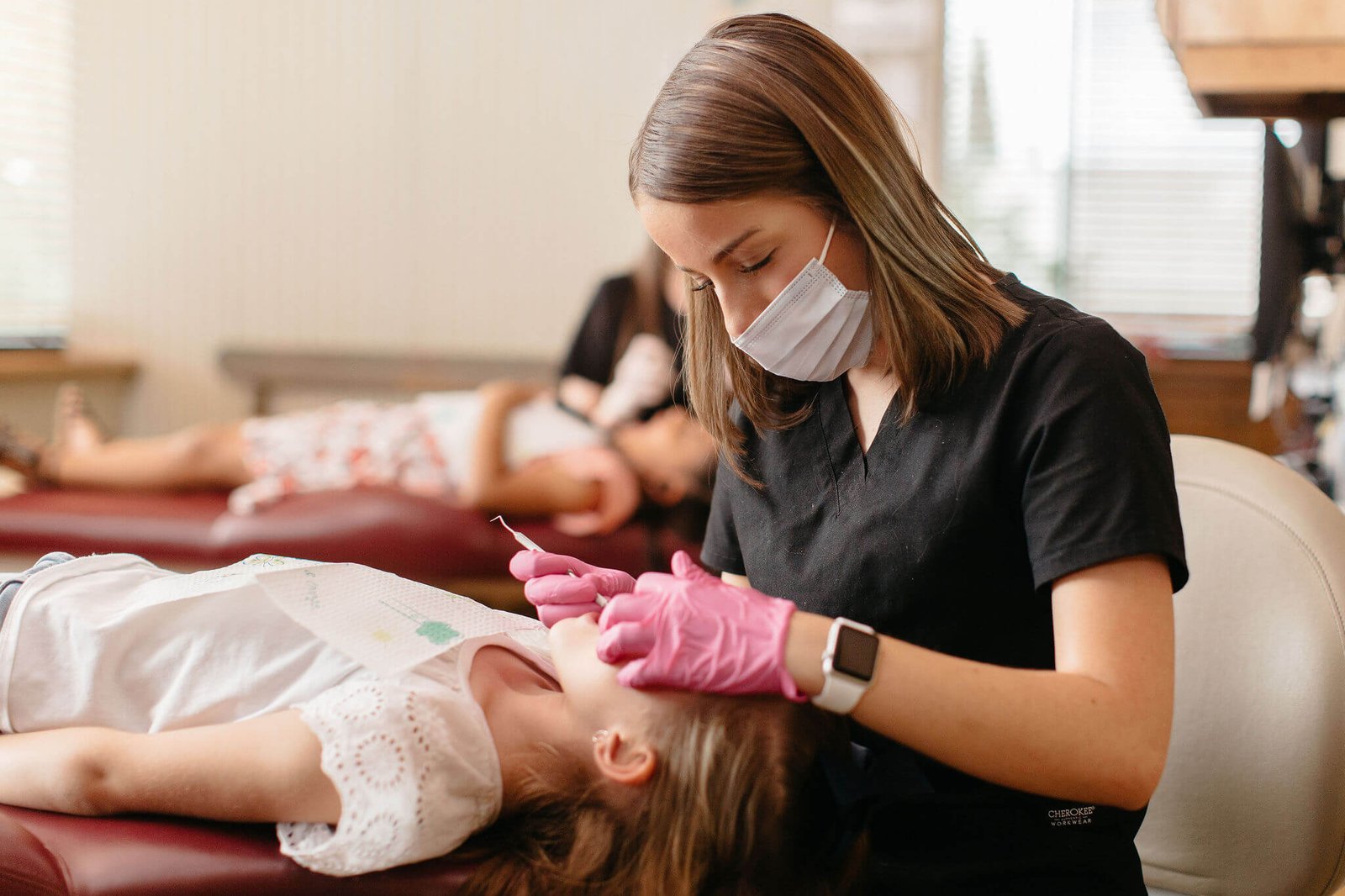
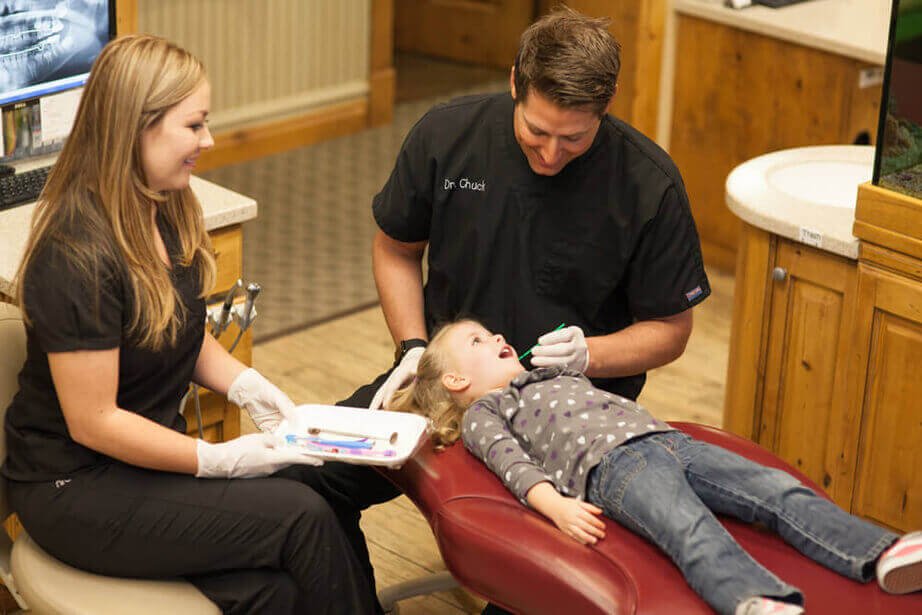
Tooth Crowns
While restoring your child’s tooth using a white composite filling is usually the best option, there are times when a tooth may be too badly damaged to be restored using a filling. In these circumstances a crown may need to be used. A crown is a tooth-shaped cap that is placed over a tooth to stop decay from spreading and prevents any further damage to the tooth.
Crowns may be made from a variety of materials that will best meet your child’s needs. We typically recommend using a less noticeable tooth colored porcelain crown when repairing a front tooth and a stainless steel crown when repairing a molar.
Pulpotomies
If cavities and dental decay are left alone for too long, they can penetrate the protective layer of the tooth called the “enamel” and infect the “pulp” of the tooth. Since the tooth’s nerves are located in the pulp, your child may experience a toothache and the tooth may even die if not treated soon enough.
Once the pulp is infected, a procedure called a “pulpotomy” is needed. During a pulpotomy the infected pulp of the tooth is removed and a medicated filling is inserted in its place. This will protect the remainder of the healthy pulp from infection and will keep the tooth alive.
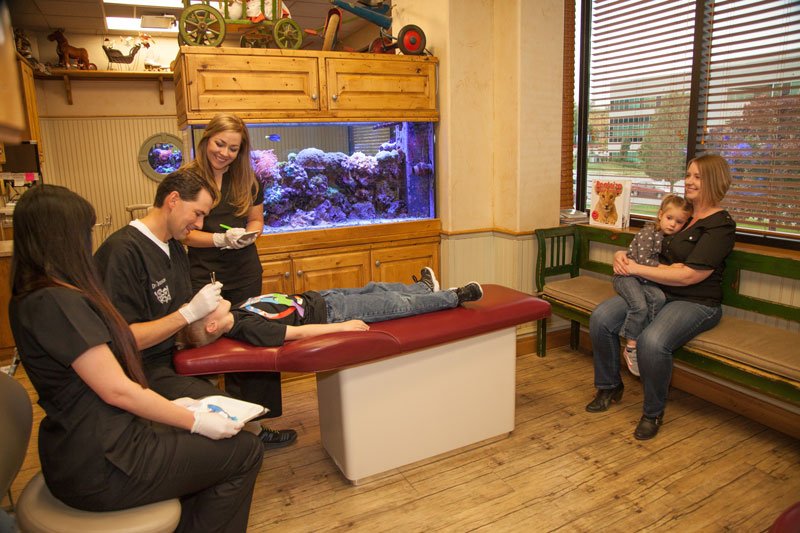
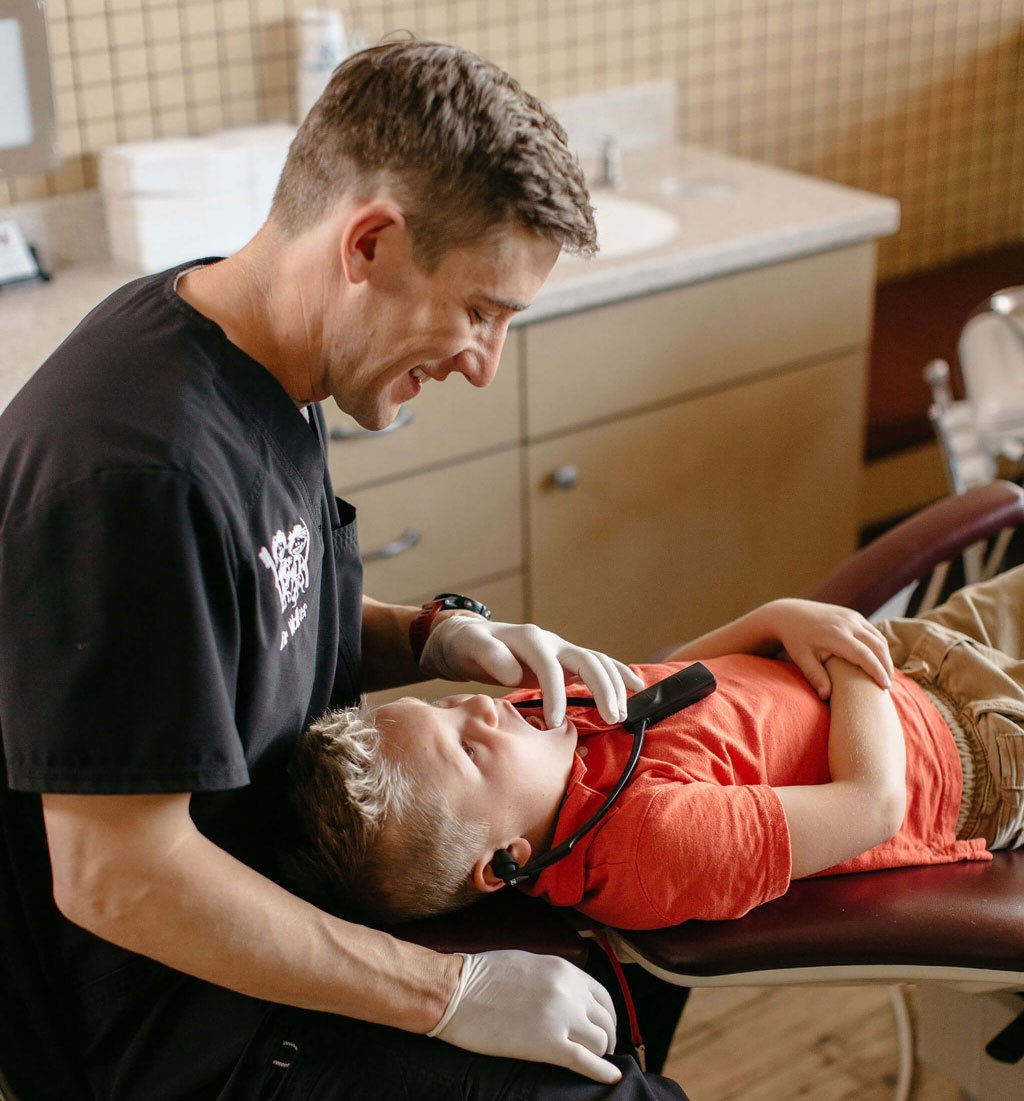
Tooth Extractions
There are situations when it may be best for your child’s oral health to have a baby tooth extracted (or “pulled”). Three of the most common situations include:
1. There is too much tooth decay to properly restore the tooth.
2. The baby tooth (primary tooth) is preventing permanent teeth from growing in properly.
3. A baby tooth needs to be pulled in preparation for braces.
The process of extracting a tooth is not nearly as painful as it may sound. When a patient needs to have a tooth removed, the area surrounding the tooth is numbed with a local anesthetic. Once the numbed area is no longer sensitive, a special device is used to loosen the root of the tooth from the surrounding gums and bone. Once the tooth is loosened, it can be safely and painlessly extracted.
Dental Sealants
What is better than fixing a cavity and restoring a tooth? Not letting the tooth get damaged in the first place! Dental sealants help make this possible.
Dental sealants are a composite material that is applied to a tooth to protect or “seal” its pitted and grooved surfaces. They prevent food and decay from getting into parts of the tooth that are difficult or impossible to clean and prevent cavities from forming. Since dental sealants are designed to match the color of your child’s tooth, nobody will even be able to notice they are there. Dental sealant application is also entirely pain-free!

Sedation Dentistry in Salt Lake City
Some children become overly anxious or are unable to cooperate when a dental procedure is performed. In these situations, sedation dentistry makes it possible to perform any needed dental work while helping the child feel as comfortable as possible.
To be able to practice sedation dentistry in Utah, a children’s dentist must receive an additional 2-3 years of training on top of the training they already received in dental school. They also attend several continuing professional education courses each year to learn the latest techniques and procedures of sedation dentistry as outlined by the American Academy of Pediatric Dentistry (AAPD).
We provide four main sedation options at Redwood Pediatric Dentistry and have performed more than 15,000 oral sedations throughout our time serving as pediatric dentists in the Taylorsville, West Valley, West Jordan and Salt Lake City area.
1. Nitrous Oxide
Nitrous Oxide (“laughing gas”) is administered to the patient through a mask placed over the patient’s nose. The gas causes a patient to feel a calming sensation when breathed and allows them to relax without losing consciousness. There are very few side effects from this sedation option and the patient fully recovers just minutes after the sedation process is complete.
3. In-office IV Sedation
This option is usually reserved for extremely anxious or uncooperative children that have extensive treatment needs. In-office IV sedation can be performed in our Salt Lake City pediatric dental office where we can help the child feel as comfortable as possible. With this sedation option, a nurse or anesthetist administers an IV containing the sedative to the child.
2. Oral Sedation
Oral sedative medications come in liquid form and are an easy and non-threatening way to help a child relax prior to a dental procedure. At Redwood Pediatric Dentistry, the child takes the oral sedative in a private room where they can relax 30-45 minutes before receiving treatment. During the sedation, the child will remain conscious but will be unaware of the pain or sensations they may be experiencing.
4. Full General Anesthetic
In extreme cases, we can schedule an appointment with Primary Children’s Medical Center and perform the necessary dental procedures there. Once at the medical center, a full general anesthetic is administered by an anesthesiologist or anesthetist. With this dental sedation option, the patient will be fully unconscious for the duration of the procedure. As Pediatric Dental Specialists, each of our doctors are authorized to practice dentistry at Primary Children’s Medical Center.
Insurance
We proudly accept most insurance plans, including Medicaid, to ensure our services are accessible to as many people as possible. Our team is happy to assist you in understanding your coverage and benefits. Call us today at (801) 281-8881 for a complimentary insurance evaluation, and let us help you maximize your coverage!
